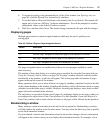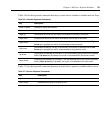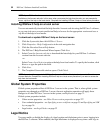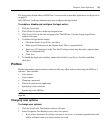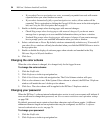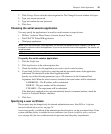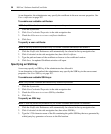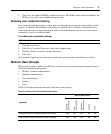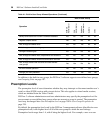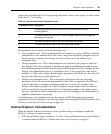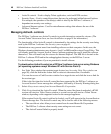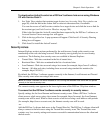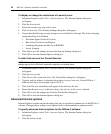
Chapter 4: Basic Operations 35
3. Click Change Password in the side navigation bar. The Change Password window will open.
4. Type your current password.
5. Type and confirm the new password.
6. Click Save.
Choosing the serial session application
You may specify the application to be used for serial sessions to target devices.
• DSView 3 software Telnet Viewer (Avocent Session Viewer)
• Win32 PuTTY Telnet/SSH application
• Third party application
NOTE: If you use a third party Telnet application, the first time you attempt to launch a session, you will be
prompted to confirm the use of that application. If you do not confirm the use of that application, the session will
not be launched.
NOTE: Only the DSView 3 software Telnet Viewer is supported on Macintosh system clients.
To specify the serial session application:
1. Click the Profile tab.
2. Click Applications in the side navigation bar.
3. Check the checkbox for the application you want to use for serial sessions.
4. If you check 3rd Party Application, enter the path and executable name of the application
(maximum 256 characters) in the Serial Application field.
Specify any of the following parameters (up to 128 characters) in the Command Line
Arguments field. When the serial session is launched, the actual values will be substituted.
%ADDRESS% - The IP address will be substituted.
%PORT% - The port number will be substituted.
%TNAME% - The target name will be substituted.
If the third party application does not automatically launch a command window, check the
Launch in Command Window checkbox.
5. Click Save.
Specifying a user certificate
This property may be changed only for internal authentication users. See DSView 3 software
internal authentication service on page 74.
A user may specify a certificate if the administrator has allowed it; see the procedure below. If the
system certificate policy is enabled for user certificates (see System certificate policy and trust
store on page 44), the user certificate used at login must meet the policy requirements.



